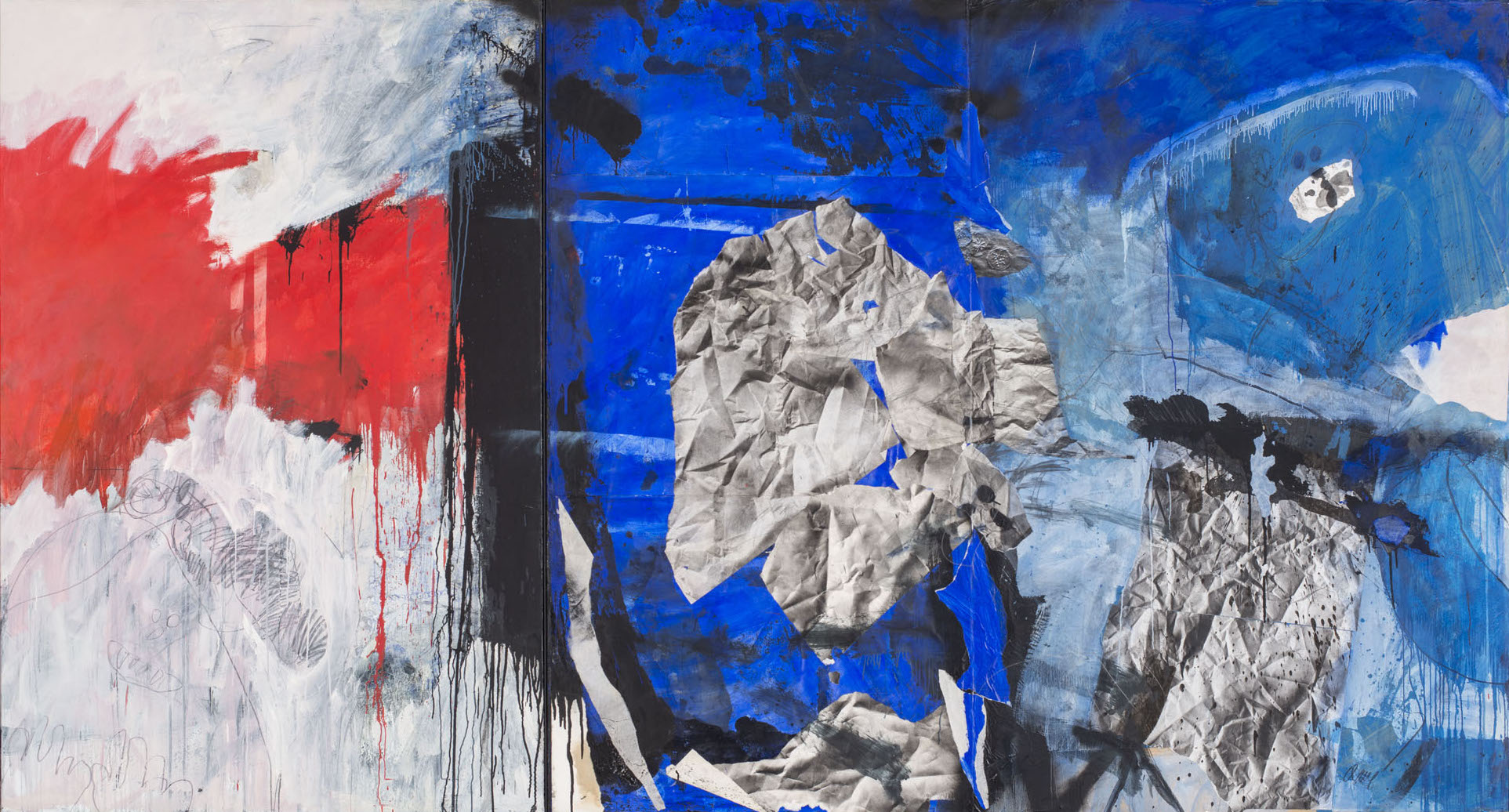In 1980 Clavé was asked to create a large-scale painting for the Barajas Airport in Madrid. The work he produced was monumental, 3 metres high by 9 metres wide, and can still be seen in Terminal 2 today. This commission was the beginning of Clavé’s taming of large-scale paintings: Triptyque (2,30 x 6m) and that above – Drôles de guerriers (1,95 x 3,60m).
The loose composition was essential to Clavé’s practice: collages of embossed and stamped papers – invented when working on Saint-John Perse, are mixed with barely outlined masks and grotesque characters (the warriors mentioned in the title). Also scattering the composition are Clavé’s usual distinctive marks such as trompe l’œil, collages, folding and unfolding. However, his process was not systematic. Clavé didn’t obey any convention and remained free in his approach, letting chance play a part in the creation process. On this three-coloured triptych, the spectator is struck by the brightness of the red and blue colours, which are all the more hypnotising and subjugating. This groundbreaking work is an explosion of violence, in which the blood-like red, the sooty black and the Picasso blue drip from the canvas. Who are these “drôles de guerriers” (peculiar warriors) who are preparing to fight?
Between 1984 and 1985, Clavé created a series of thirteen works titled “A Don Pablo” for the Picasso Museum in Antibes. The above work heralded this future homage to Picasso, his Master and friend.

